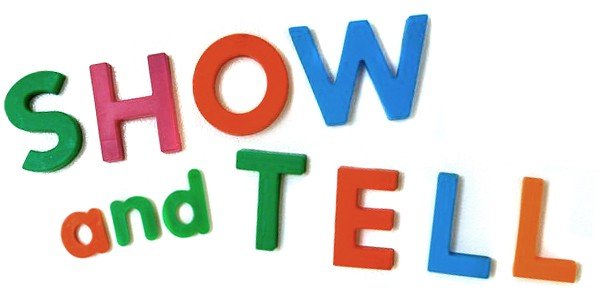I think that to grow and improve your skills, you must have the courage to face your fears. This leads to fostering co-responsibility and creating spaces to bridge differences, for example, Japan has an ageing population and a fascination with technology, and this has led to the development of companion robots. Sales professionals must allow their clients intellectual oxygen to express what’s going on in their heads. Today, it is not enough to say in words that your organisation makes a difference. We want a visible proof of the responsibility an organisation says it takes. Contact me via e-mail for a workshop regarding your organisation’s approach and execution strategies.
What's important to you?
I think salespersons should be looking for a verbal commitment to ask questions and they should only sell to what your customers tell you. No one cares about the salesperson, you can be whoever you want, all that matter is your presentation as it all about the performance. Short presentations are best in my opinion because if you go on a monologue then your clients are not really listening. Good salespersons look for a way to make a connection with their customer, and build a conversation based on trust. If you want to achieve your goals of persuasion, start working on your verbal and non-verbal communication skills today. Contact me via e-mail when you are ready to build on your conversational skills.
Social skill guidelines
How to improve your social skills?
Say 'Thank you’
Say 'Please'
Listen without interrupting
Do not brag
Wait your turn
Choose kind over clever
Demonstrate empathy
Forgive first
Talk less, but say more
Show gratitude
Do not respond to negativity
Be humble
Ignite your enthusiasm
How do you sell your products and services effectively?
Some people are better than others at telling their story. You have to keep pushing as the resilience and perseverance is what will drive your company and they are the key characteristics of entrepreneurs. We must never forget that our customers are our sales force, and we will need to get our customers talking about our products and services and sharing those experiences.
How will you communicate the vision behind your company?
I think passion is everything and it starts from the leader whose vision it was to build that company. Passion is contagious, and I am passionate about building self-esteem and this comes across in every conversation. I think it takes courage to be simple.
Just respond
We often react without thinking as it’s a gut reaction, often based on fear and insecurities, and it’s not the most rational or appropriate way to act. Responding, on the other hand, is taking the situation in, and deciding the best course of action based on values such as reason, compassion, cooperation, etc. I care enough to show up and say, “I notice this, I think it’s this and we should do that.” We have to listen and then respond, not react, just respond.
“Always doing things in a calm and confident way.”
Big picture before details
In my experience it’s important to make an emotional connection with people and you have to share what you are passionate about. The first question you have to ask yourself when you are creating your brand, product or service is, “What is it that I am truly passionate about?” I think that you have to appeal to the heart before the brain as our brains crave meaning before details. Back in the days when we were running around in the Savannah, if we saw a sabre tooth tiger, we never thought about how many teeth it had. Our first response would be, should I run, or will it eat me? Our brains are hardwired to process information this way and that’s why we need the big picture before the details.
V is for value
Do you understand how value is created within your organisation and how it is created for your customers? This requires understanding of the value of long-term brand building and the communication of its commercial benefits for your financial team regardless of whether you are a start-up or a multi-national organisation.
“A fool is someone who knows the price of everything and the value of nothing.”
Align your company focus
The North Star has been used for the purposes of navigation for centuries, acting as a guiding light, people have used its brightness and prominence in the sky to ensure they are travelling in the right direction. The principle of the North Star works as a fantastic analogy in the world of business. Are you and your colleagues clear about whether your business is travelling in the ‘right direction’?
I have been involved in the world of business improvement and customer experience for over twenty years. For the past six years, I have had the opportunity to see and experience organisations across a variety of industries all over the world. Whilst I observe a number of similar issues and opportunities to improve and become more customer centric, one of the most common observations I make is on the subject of ‘clarity of purpose’. Contact me via e-mail if you interested in me facilitating a ‘North Star’ workshop for your organisation.
Watching brief
Whilst there is a need to keep a watching brief on the changing customer environment, their needs, and technologies, the benefit of a good education is the ability to think on your own. In effecting other people with words, I found something very interesting about communication, you have to learn to be nice as your attitude will make a huge difference to how you are received. Communication is 80% what you feel and only 20% what you know, I think it’s not so much what you say as how you say it. Your attitude will make the difference in both your sales results and in the quality of your life as most people are interested in how you feel not just in what you know.
“Once you’ve accepted your flaws no one can use them against you. ”
Tell good stories
Storytelling is ingrained in our culture, in fact, ever since humans first walked the earth, we have shared stories. The basic purpose of a storytelling is to share a story, message or theme that is understood universally by your audience, even though it doesn’t have to be interpreted the same way by every person. Great storytelling connects our past, present, and future.
Here are three fundamental keys to creating a good story:
- I did this …
- Then I did this …
- Then this happened.
I think your storytelling will create a mental image or entice the listener into the story and this requires that the audience be actively engaged. And it doesn’t matter if you’ve moved the audience to tears unless they know how they can make a difference, so remember to add a call to action.
Show and tell
The best storytellers, authors and speakers paint pictures giving the audience something they can visualise in their heads. I help managers and leaders gain clarity in their message so that they can grow their influence and build trust in the workplace. Gaining more clarity about what their message is and then looking at the steps and things that they can do to get even more clarity. Getting managers and leaders pointed in the right direction to help them implement and put things in their lives that can take them and their team forward, for example, journaling, tracking the data, finding out why “X” felt that way, etc.
I have clarity about who I am, I have clarity about my story and how to share it in a way that brings value to the people in the room. Do you know what your gifts are and where your talents are best used? Do you know how to build your story so that it elevates others? My mission is to make people great communicators - transmitting their message clearly and concisely so that it is understood - regardless of their field or career path. Reach out to me via e-mail if you would like to learn how you can share better, message better, communicate better.
Follow the leader
I think that there’s a science to storytelling. Good storytellers transport their audiences, making them feel what the characters feel. For audiences to bond with characters in this way, there has to be some sort of arousal response in the brain. I mean that in order to engage the listener, storytelling requires the ability to tell a story with just the right emotion, description, and details… not too much and not too little.
What distinguishes business storytelling from classical storytelling?
Business storytelling has a clearly stated point. Classical stories are enriched by multi-layered interpretations, but in business storytelling, there should be no doubt in the listeners’ minds about what they should do in response to your story. When it comes to business stories, don’t just wing it and ramble. Know the structure that will be easiest for your audience to follow and then they will not only follow the story, but they’ll also follow you as a leader.
The keys to a good story
When it comes to storytelling one of the best ways to draw people to you is not by telling them - you should do this or that, you should listen to me, etc. A much more powerful and persuasive way to do it is to share the same lesson in a story. I think that sharing a good story is a win-win as both the storyteller and the audience are elevated to a higher level. The more you tell, the more you sell, set the stage, start dialogues, and present the point.
I think all good stories starts with you taking the audience to a time and place when this happens, and you need to be very specific. Perhaps, I’m mistaken but I remember that fairy tales always start with, “once upon a time.” When I tell stories I always try to set the stage, for example, “many years ago I did…” to create a mental image in your imagination. I like to use dialogues because dialogues are so powerful in storytelling as places the listeners and readers right in the middle of the scenario. For example, how many of you can visualise a 2m tall guy on stage from the back of the room? See, dialogue immediately puts your listeners right into the middle of the action, and this is a very powerful thing to do. What’s the moral of the story? What’s the transformation? What’s the one takeaway that you want the listener to have?
What is your story?
I think for brand storytelling to work, we have to understand where we’re starting, where it is we aspire to be, how much time we’re willing to invest and how committed we are to executing this consistently. And that’s when we’ll see the relative force behind a brand story jump dramatically. The force is your brand story and what you are able to accomplish by committing to it over a specific period of time.
How consistently will you tell your brand story? This usually follows closely on the heels of an organisation’s willingness to change how they approach marketing and how they connect with audiences. Are you trying to accomplish great things but refuse to step away from your brand-centred tactics? Alternatively, are you willing to become customer-centric and shift your efforts in their direction? Where you are right now with your level of sophistication in brand storytelling? Contact me via e-mail fro arrange a storytelling workshop for your brand.
Storytelling on Sunday
Business storytelling elements help you engage your audience and leave a lasting impression. A story with business impact can be as short as one sentence, a three-minute speech, or a thirty-minute product demonstration. No matter what, it should have the following:
- An intriguing beginning
- A riveting middle
- And a satisfying end
For brand storytelling to work, we have to understand where we’re starting, where it is we aspire to be, how much time we’re willing to invest and how committed we are to executing this consistently. That’s when we’ll see the relative force behind a brand story jump dramatically. I have helped leaders build relationships, credibility, and impact via stories. Contact me via e-mail for a meeting about how to create a short story that other people can relate to.
What did you say?
Verbal communication is a skill, one must be careful about how you say things to avoid misunderstandings because everyone has different meaning for same words. In this world what you say doesn’t matter as much as how you say it. When putting forward an opinion, you need to think about your choice of words, your gestures, body language and about your tone intensity pitch.
My father always used to say, “It’s not what you say, it’s the way that you say it!” I think that this is correct and incorrect at the same time, as it's both what you say AND how you say it. The non-verbal components of an assertive message are really the key to its effectiveness. When a customer sees you - your look and your body language - you are already communicating to them, non-verbally, and they are deciding whether or not they want to listen.
The outsider’s perspective
I think that before you begin to communicate with anyone you have to know who you are communicating with and what’s important to them - always start with the other person in mind. As it’s the season of goodwill, here’s a few questions to consider in terms of communication:
- Who is this for?
- What’s in it for them?
- How much do you know about them?
- Can you meet them where they are?
Being an effective communicator is an invaluable leadership skill that goes far beyond having an even temper or providing concise directives. It relies on a thoughtful combination of empathy, accessibility, approachability and a genuine level of care and compassion for your team. Take your team on a short journey and land them in a better place than where they started. In essence, a strong communicator is a conscious communicator, and a conscious communicator is well on their way to becoming an incredible leader.
Facts on Friday
The real difference between us and chimpanzees is the mysterious glue that enables millions of humans to cooperate effectively. This mysterious glue is made of stories, not genes. We cooperate effectively with strangers because we believe in things like gods, nations, money, and human rights. Yet none of these things exists outside the stories that people invent and tell one another. There are no gods in the universe, no nations, no money, and no human rights – except in the common imagination of human beings. You can never convince a chimpanzee to give you a banana by promising him that after he dies, he will get limitless bananas in chimpanzee heaven. Only Sapiens can believe such stories. This is why we rule the world, and chimpanzees are locked up in zoos and research laboratories.
From “Sapiens: A Brief History of Humankind” by Yuval Noah Harari
Understanding your biases
A cognitive bias is a subconscious error in thinking that leads you to misinterpret information from the world around you, and affects the rationality and accuracy of decisions and judgments. Biases are unconscious, they are automatic processes designed to make decision-making quicker and more efficient. Cognitive biases can be caused by a number of different things, for example, heuristics (mental shortcuts), individual motivations and social pressures. Everyone exhibits cognitive bias, and it might be easier to spot in others, but it is important to know that it is something that also affects your thinking.
Here are some typical signs that you are influenced by some type of cognitive biases:
- Only paying attention to news stories that confirm your opinions.
- Blaming outside factors when things don't go your way.
- Attributing other people's success to luck but taking personal credit for your own accomplishments.
- Assuming that everyone else shares your opinions or beliefs.
- Learning a little about a topic and then assuming you know all there is to know about it.
When you are making judgments and decisions about the world around you, you like to think that you are objective, logical, and capable of taking in and evaluating all the information that is available to you. Unfortunately, these biases sometimes trip us up, leading to poor decisions and bad judgments.
Don't crave attention
There is a load of measurable, quantifiable coaching programs out there but I’m all about the human-to-human communication. I would like to draw your attention towards attention. There is a spectrum that goes from noticing the other person to tuning into the other person, I mean emphasising and understanding what’s going on with them. Are they in need? Is there something we can do to help them with compassion? These questions only arise in the first place when we go down that road as information consumes attention.
“A wealth of information creates a poverty of attention.”
In 2016, Daniel Goleman posted an interesting blog on Linkedin, in the blog Goleman quotes a landmark article by Robert Rosenthal and Linda Tickle-Degnan that described the three essential ingredients for rapport:
Mutual attention,
Shared positive feeling, and
Synchrony or coordination.
How can you improve your listening skills? While there are many strategies for developing better listening habits, a key step is to become aware that you aren’t listening well. Poor listening is often an unconscious habit and as such is governed by the part of brains that handles automatic tasks. Before we can change a habit, we need to become aware of it. That type of awareness can be developed through mindfulness, the secret ingredient in habit change. Once we’re aware in the moment, we can choose to step away from distractions and focus attention on another person. You can read Daniel Goleman’s blog here.





















